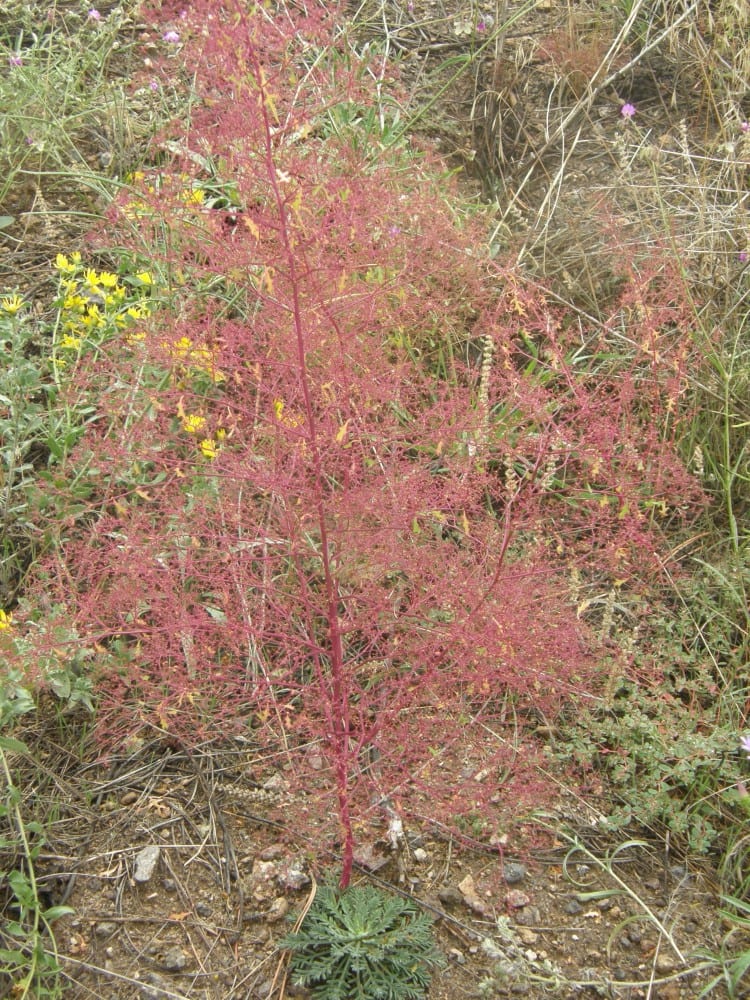This week’s flower is fetid goosefoot, and it does give off a fetid odor. However, all odorous faults are forgiven by its stunning fall visual display. Even though it looks like fetid goosefoot is blooming now, this annual plant turns a beautiful magenta when it dies. Often, you can find a stand of 50 to 100 plants under a ponderosa, which light up the area as though a magenta colored mist encircled the tree.
When it is alive and blooming, fetid goosefoot is not nearly as vibrant. During the growing season it has small leaves and even smaller flowers, only about a millimeter in diameter. Its botanical name changed twice since I first learned it. Thus, depending on which flower book you use, you might find it called any of these three names: Chenopodium graveolens, Tiloxys graveolens, or Dysphania graveolens. As you explore our forests this fall, I hope you catch a glimpse of its stunning color.
Enjoy.


I’ve always loved the straw-colored “skeletons” of this plant that blow around like delicate tumble weeds in winter. They hold their shape well, and have always reminded me of miniature trees. Thanks for the ID; I’ve been wondering what they were for a long time, but couldn’t find them even in my “A Flora of New Mexico.”
Not everyone finds it fetid: many people find the smell pleasant and minty. We took a poll on a hike a few months ago and about 3/4 of us liked the smell. The same is true of fetid marigold (which smells wonderful but isn’t nearly as pretty as autumn fetid goosefoot).